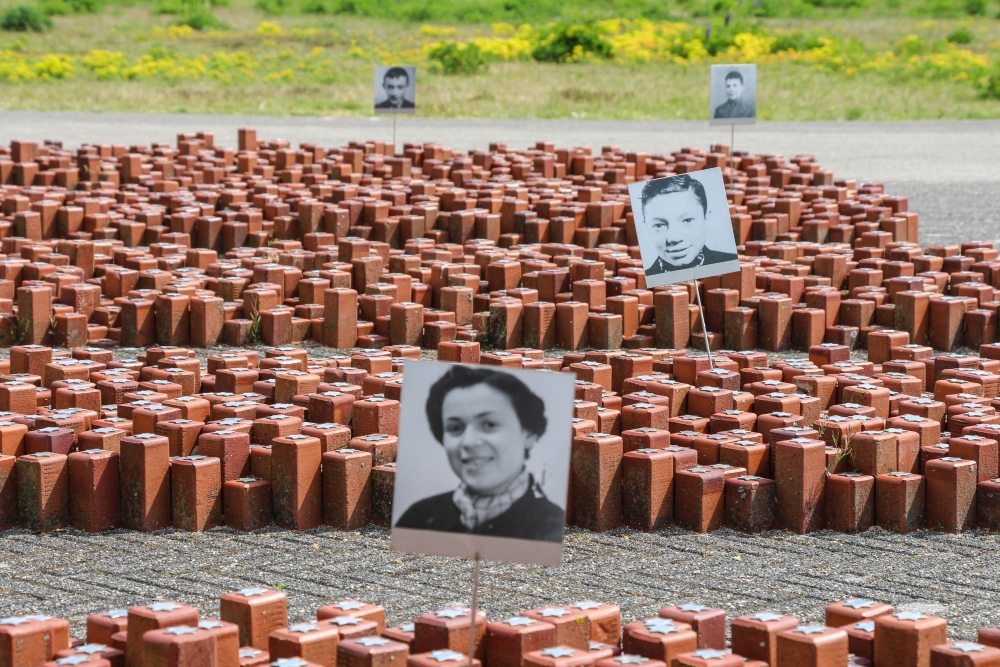Memorial Cosel Transports
The Jewish Transports to Cosel
On initiative of some people from Limburg (the South of Holland) there is finally a plaque unveiled at September 2, 2016 near the former goods store station of pre-war Cosel (Poland) and this as a remembrance of the so called Cosel Transports.
In the period between August 29 and December 10, 1942 just 18 deportation trains with Dutch Jews from the Durchgangslager Westerbork, which would go to the extermination camp Auschwitz-Birkenau, stood still at the little town of Cosel in Upper Silesia, Poland, about 100 kilometres West of Auschwitz. The in total 39 trains came from Drancy and Pithiviers (15 French), Westerbork (18) and Mechelen (6 Belgian). In total about 3500 Jewish men and boys at the age of 15 till 50 years were separated with violence from their families and were forced to work in the Jewish forced labourer camps in the region. Mrs. Annelies and Mr. Herman van Rens have done a lot of research about the persecution of Jews and Sinti in Limburg. They discovered the unknown fact that most of the men of Limburg with the mentioned ages had to leave the train under force in Cosel. Most of them were part of the transport which left Westerbork at August 28, 1942. This happened to be the first train which had to stop in Cosel.
Cosel before the war was a German little town and now lies in Poland and is part of the region community Kedzierzyn-Kozle. Deportation trains stopped at the goods store station of Cosel in the period of August 28 and December 10, 1942 with aboard Jews on their way to the extermination camp Auschwitz-Birkenau. The trains came mostly from Drancy and Pithiviers (France), Westerbork (Holland) and Mechelen (Belgium). SS-Oberführer Albrecht Schmelt was charged by Heinrich Himmler to find labourers in Upper Silesia and had the permission to pull Jewish men between 15 and 50 years out of the trains. About 9.000 men and boys were cruelly separated from their families here. They were brought to a various number of camps which belonged to the Organisation Schmelt in Silesia and other regions. The biggest of these camps was Blechhammer (Blachownia). About 165 camps were closed from 1943 or changed in support camps of the existing concentration camps. Many of the boys and men lost their lives between 1942 and 1944 in forced labour camps of the Organisation Schmelt. Others died in 1944 and 1945 in concentration camps or during ‘the Death marches’. Of the 9500 men there only between 700 and 900 survived the war.
The goods store station has not really changed since, even the more Western place of the station for travellers. This station is still in use; The goods store station is empty and is neglected. Nothing remembers which dramatic happenings took place here during WW2 and which great influence this had for the history of the Dutch (and French and Belgian) history of the Holocaust.
The 'Cosel group' during WW2 is for the Dutch Jewish victims smaller than the groups which were deported to Auschwitz-Birkenau and Sobibor, but bigger than the groups of victims of the deportations to Mauthausen, Bergen-Belsen and Theresienstadt. Yet about the fate of these people researched and described is very little known in the Dutch and international literature of the Holocaust.
Do you have more information about this location? Inform us!
Source
- Text: Edwin van der Wolf
- Photos: Geert Goossens
Related books
Nearby
Monument
Cemetery
- Soviet War Cemetery Kędzierzyn-Koźle - Kędzierzyn-Koźle
- Collective Grave Polish Soldiers - Kędzierzyn-Koźle










